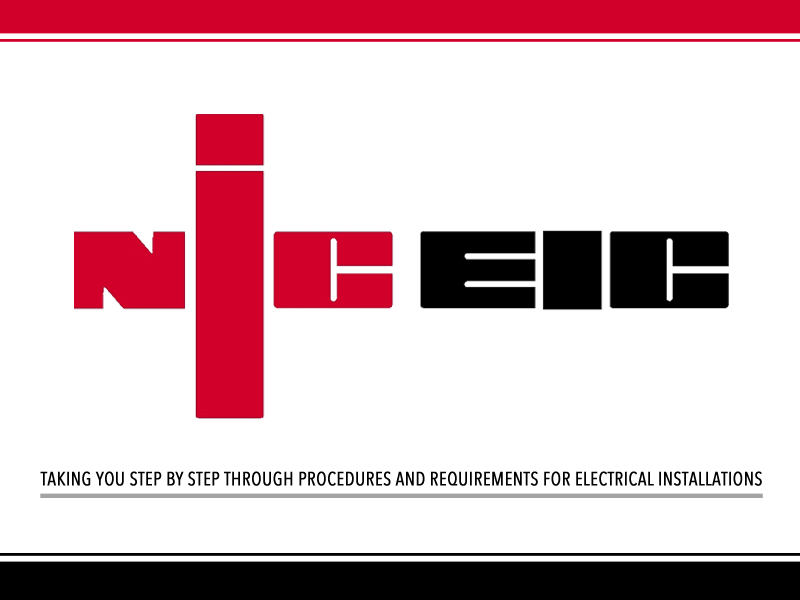
The aim of this article is to provide guidance for the electrical contractor on the appropriate use of a Minor Electrical Installation Works Certificate (MEIWC), when carrying out an addition or alteration to an existing final circuit.
Introduction
Where an addition or alteration is made to an existing final circuit, as shown in Fig 1, it should be verified that the work carried out complies with BS 7671 and does not impair the safety of the existing installation (Regulation 641.5 refers). In such circumstances a MEIWC may be used as an alternative to an Electrical Installation Certificate (EIC), although, Regulation 644.4.201 requires that a separate minor works certificate is issued for each circuit worked on.
A MEIWC must not be used to certify the installation of a new circuit, even if the circuit supplies only one point (as defined).
It should be noted that before any addition or alteration is made, Regulation 132.16 requires the adequacy of the existing installation is to be assessed, including the earthing, bonding and maximum demand, for the altered circumstances.
Replacement of a single protective device
A MEIWC may be issued to certify a ‘like-for-like’ replacement of a single protective device, or a single item of switchgear containing a single protective device.
In addition, a MEIWC may also be issued for the replacement of a device that is not considered ‘like-for-like’, but only in circumstances where the skilled person carrying out the replacement can verify that the replacement device satisfies the requirements of BS 7671, particularly, for the safe disconnection of the circuit under fault conditions.
For example, it may be the case where the observation on an Electrical Installation Condition Report (EICR) identifies that the measured earth fault loop impedance (Zs) for an existing circuit protected by a Type C circuit-breaker exceeds the maximum value permitted by BS 7671. Such that the remedial work required may involve replacing the existing circuit-breaker with an RCBO, or a Type B circuit-breaker or if possible, de-rating the device (for example replacing a 10 A protective device with a 6 A device).
For any of the options previously described, the minor works certificate may be used as it makes provision for the skilled person undertaking the work to record the relevant inspection and tests, as shown in Fig 2, required to verify that the work complies with BS 7671 and does not impair the safety of the existing installation.

Replacement of switchgear incorporating more than one protective device
The replacement of an item of switchgear containing more than one protective device, such as a two-way (or more) consumer unit, is not considered minor work. Such work requires a greater degree of inspection and testing, including many more relevant parts of the installation, than would be required for work carried out on an existing single circuit.
For these reasons, the Notes For Recipient, printed on the reverse of NICEIC and ELECSA MEIWC (which are based on the notes contained in Appendix 6 of BS 7671) state that the certificate is not suitable for certifying the replacement of a consumer unit or distribution board, for which an appropriate Electrical Installation Certificate (EIC) should be used.
Further guidance on completing Certificates and Reports, is given in the NICEIC and ELECSA publication: Inspection Testing and Certification.

Replacement of an RCD
Similarly, where an existing RCD needs to be replaced, for example, because of a failure of the test button, the replacement may be certified using a MEIWC. However, the requirements of Regulation 132.16 should be satisfied before the work is carried out. For example, prior to the replacement of an RCD that is used for the purposes of providing fault protection for the final circuit(s) connected to a TT system, as shown in Fig 3, the condition and adequacy of the Earth electrode, earthing conductor and protective bonding conductors should be verified as a minimum using appropriate test methods.
Replacement of an accessory
Although a minor works certificate may be used to certify the replacement of an accessory, for example, a wall switch or a socket-outlet on a ‘like-for-like’ basis, such work would generally fall under a maintenance regime and so the client, such as a local authority, can choose to use their own documentation instead.
However, where this is the case, the safety declaration, installation details, and the inspection and test results recorded on the client’s documentation should be no less comprehensive than would be included on the MEIWC. A copy should also be retained by the contractor.
Where a MEIWC is used to certify the replacement of an item of equipment, a separate certificate would be required for each circuit affected. It is therefore acceptable to issue a single certificate where more than one item of equipment is replaced on an individual circuit, but should not be used to certify modifications carried out on different circuits.

Replacement of protective bonding conductors
The installation or upgrading of main or supplementary protective conductors can be recorded on a minor works certificate, however, where protective bonding is carried out in more than one location, such as an out building or garage detached from the main installation, a separate MEIWC should be issued for each location.
Summary
The use of a MEIWC is only applicable for work carried out on an existing circuit and should not be used for the installation of a new circuit or the replacement of a consumer unit and/or distribution board.
Before any addition or alteration is made to an existing circuit the adequacy of the existing installation must be assessed including that of the earthing and bonding arrangements for the installation and the maximum demand for the altered circumstances.









